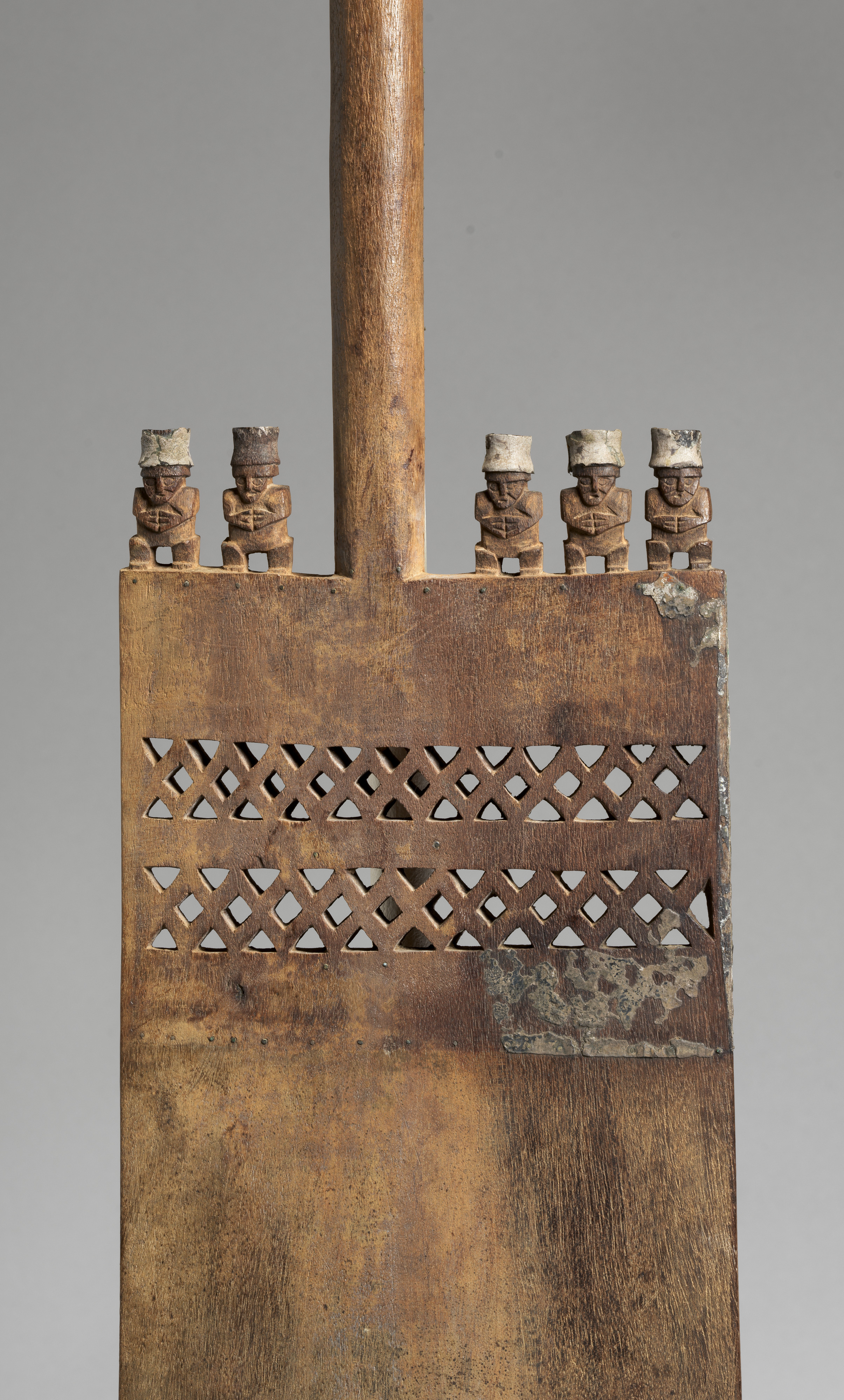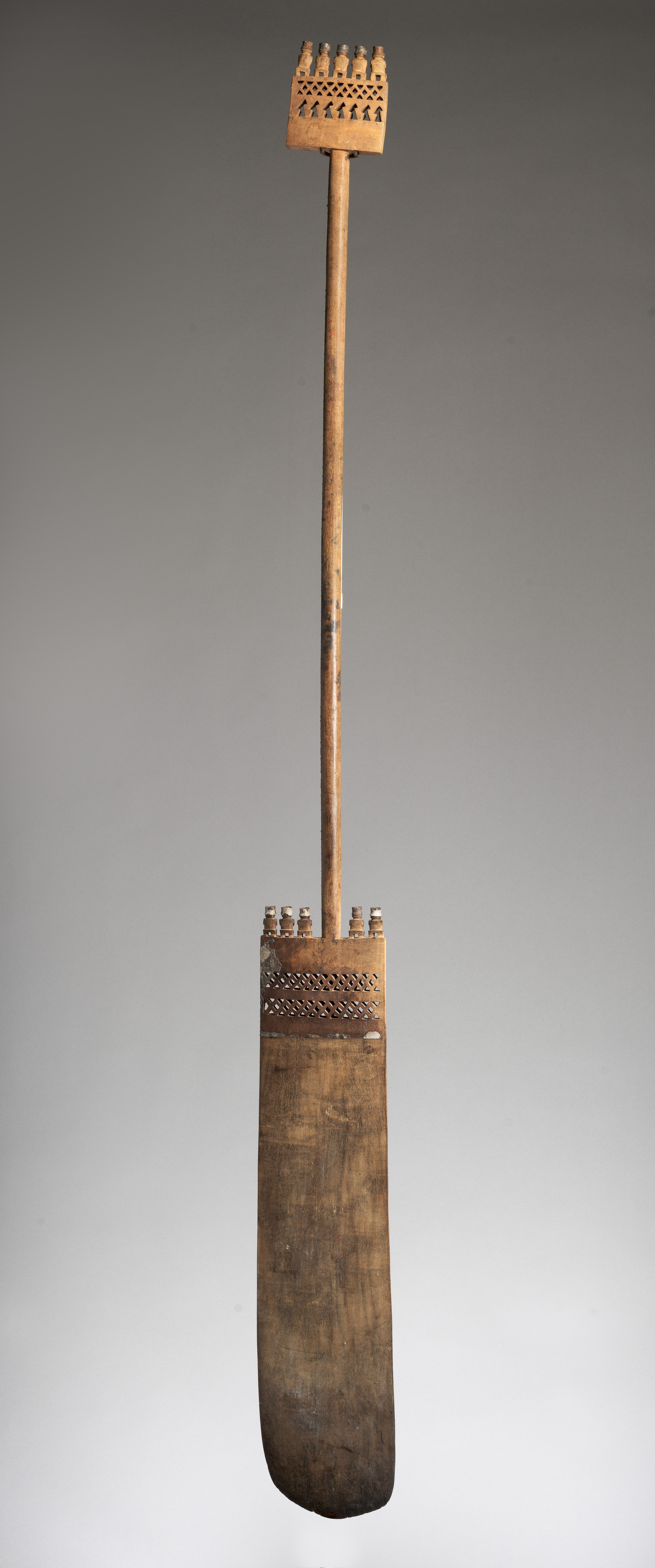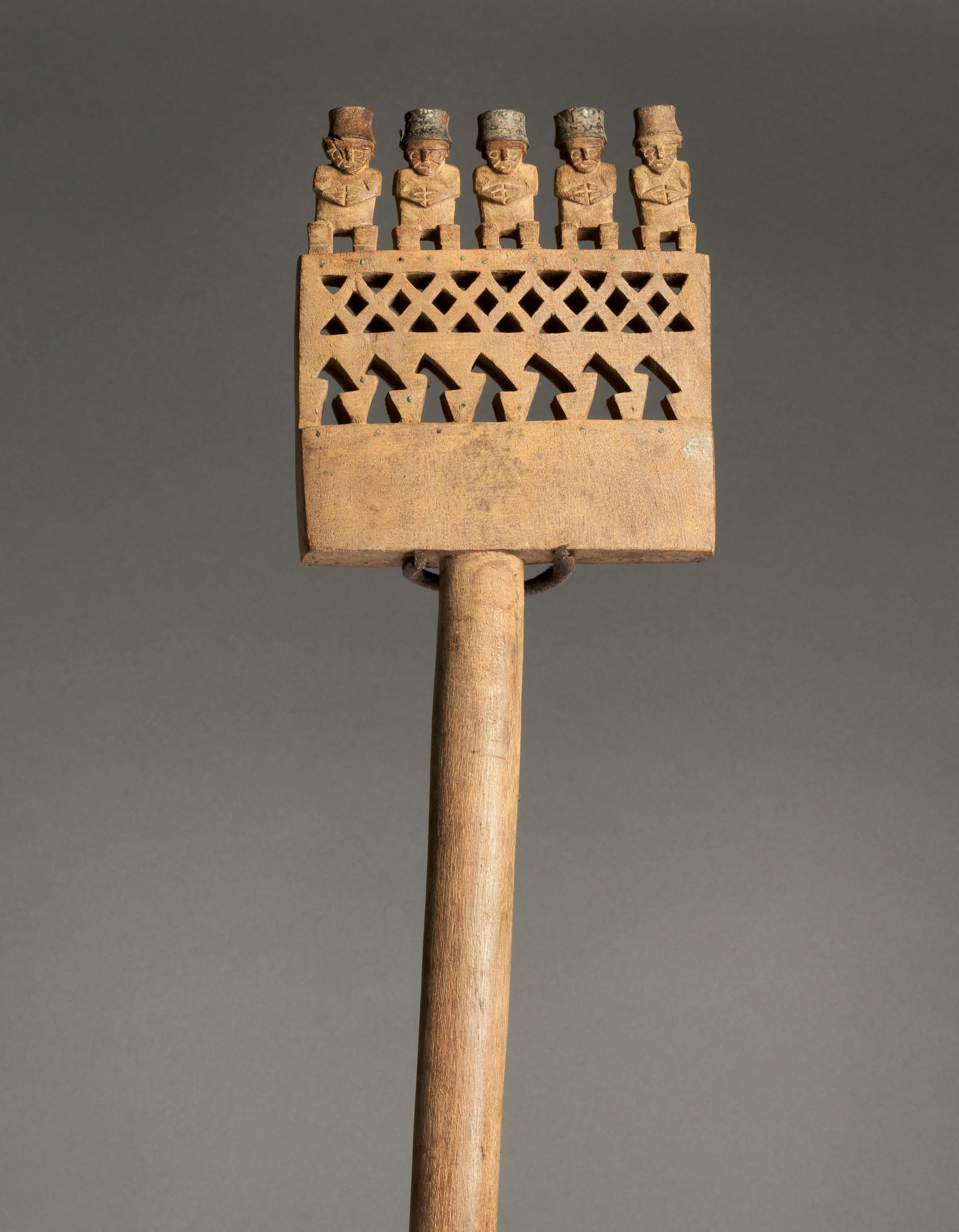Ceremonial digging stick
Not on view
This imposing ceremonial implement was carved from a single piece of algarrobo wood (Prosopis chilensis). The implement consists of two carved sections joined by a pole-like handle. The bottom section terminates in a flattened and rounded end and has openwork near its top composed of triangular and diamond shapes. The openwork is surmounted by five small figures with silver headdresses. The top section also features openwork bands surmounted by five figures. There is evidence of what was once a silver covering from right below the openwork decoration on the bottom section, up the pole, to the top (excluding the figures, of which only the headdresses are silver).
Similar implements in the Met’s collection include examples embellished with pigment (MMA accession number 1979.206.1025), and elegant openwork designs (MMA accession number 1979.206.1027). All of the scientifically excavated examples of these implements have been found in the Chincha and Ica valleys, on Peru’s South Coast, and date to the 15th–16th century.
The function of these objects has been a lively topic of discussion among scholars for many years. Sometimes called tomb markers, they have also been called remos (Spanish for paddle or oar) because of their resemblance to the rudder boards used on Precolumbian boats described by Spanish chroniclers (Koda, 1989; Kvietok, 1997). However, no evidence of blade deformation due to water immersion, as one might expect from nautical implements, has been observed. In contrast, analysis of use patterns of similar, but smaller, objects found in scientifically excavated tombs indicates that they are probably representations of agricultural implements used for preparing the soil for planting. Although this example and those of similar shape and size show no use patterns and would be awkward to handle, smaller wooden carvings with flat blades show abrasion patterns on the bottom ends consistent with having been thrust into soil containing small rocks. Tools with broad flat ends tapered at both the medial and axial edges would have been used to turn the soil similar to a plow, whereas other wooden objects with blunt or rounded ends would have served to break up the clods. Large, finely carved and painted boards such as the present example were likely ceremonial, used perhaps in rituals dedicated to agricultural fertility.
Further Reading
Jones, Julie. Art of Empire: The Inca of Peru. New York: The Museum of Primitive Art, 1964. See especially pp. 42-43, 46-48.
Koda, Yae. Prehistoric Agricultural Implements of the South Coast of Peru. PhD dissertation, University of California, Berkeley, 1989.
Kvietok, D. Peter. "Digging Sticks or Daggerboards? A Functional Analysis of Wooden Boards from the Ica Region," Andean Past: 1 (1987), pp. 247-274.
Schmidt, Max. Kunst und Kultur von Peru. Berlin: Propylaen Verlag, 1929. See especially pp. 428, 429, 431, 430, 432, 433.
Due to rights restrictions, this image cannot be enlarged, viewed at full screen, or downloaded.
This artwork is meant to be viewed from right to left. Scroll left to view more.





